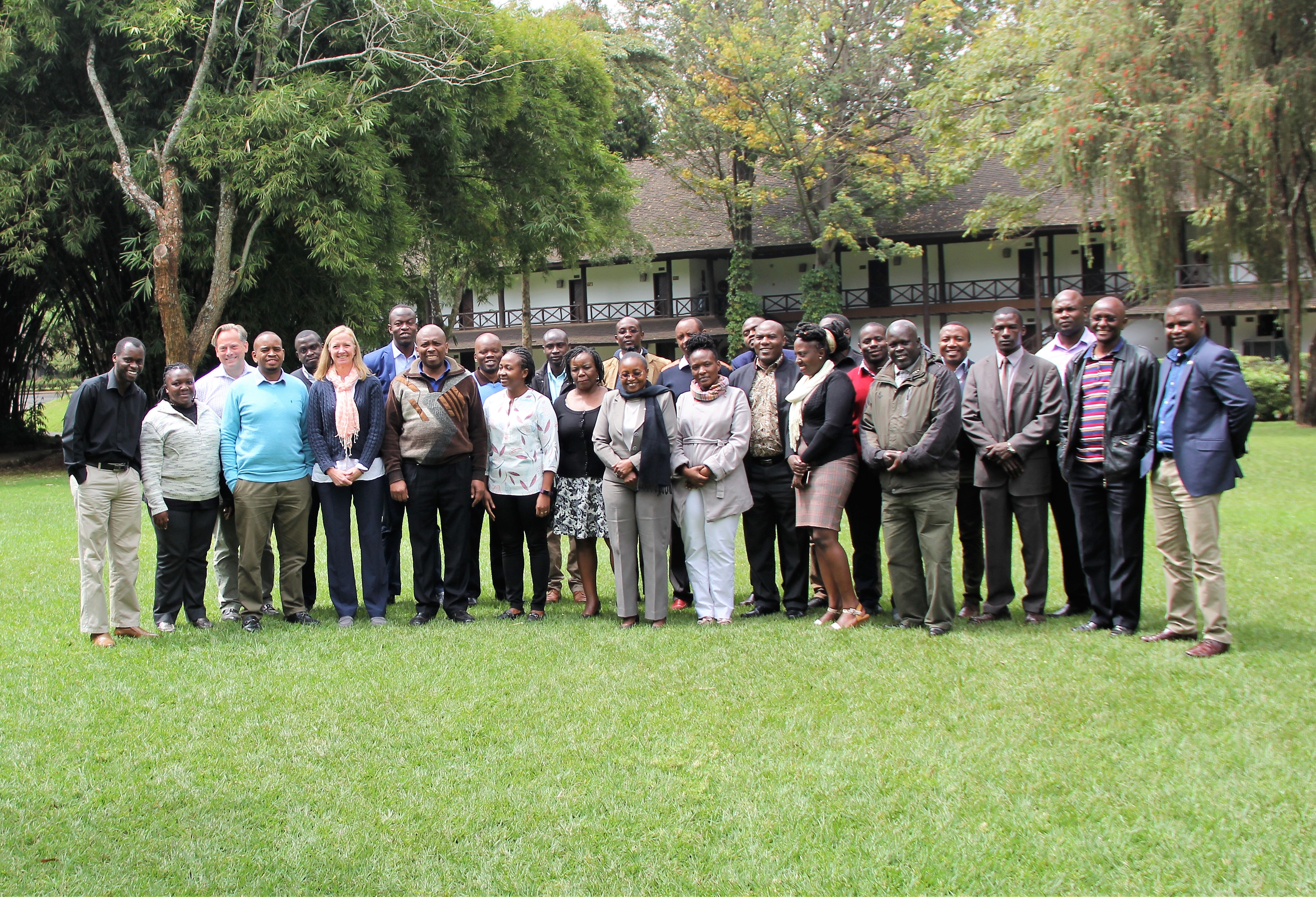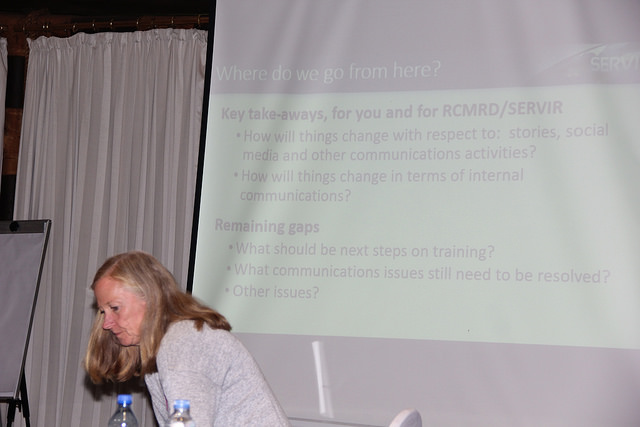A key challenge is helping scientists tell their “story” clearly and concisely. That is why SERVIR-Eastern and Southern Africa (SERVIR-ESA) hub, implemented by the Regional Center for Mapping of Resources for Development (RCMRD) conducted a communications and outreach training for staff.
Aims of Communications Training:
The training was conducted as part of an ongoing effort to energize communications and outreach in SERVIR which consists of four regional hubs globally. The SERVIR Support Team (SST) facilitated the training. It was aimed at enhancing the ability of RCMRD/SERVIR-ESA to produce compelling impact stories and manage messaging across platforms as well as inspire the Hub team to actively support the communications effort.
Speaking at Safari Park Hotel, the training's venue, RCMRD Director General Dr. Emmanuel Nkurunziza welcomed the facilitators and said it was long overdue. "With this training, we can now review how we are faring collectively as an organisation. There is a difficulty in talking about our field and that was witnessed recently when RCMRD was hosted on a local TV station and our two representatives had to communicate about what RCMRD does in simple terms for the public to understand." He said the 2016 mid-term review of RCMRD declared the organisation was faring poorly in communications.
Training overdue
Dr. Nkurunziza agreed that the key training challenge was helping scientists tell their 'story' clearly and concisely. "Earth observation science must be communicated well to the rest of the world: in policy making, social, education, economic planning, and many other realms. So use this time to improve yourselves as this training was most certainly overdue."
Training Content
The SST produced information and guidance materials on strategic and tactical approaches to communications in liasion with the hub's communications and outreach expert. These included messaging guidance, PowerPoint templates, success and impact story outlines, guidelines on effective storytelling, guidance on effective branding and social media strategies. RCMRD being the first hub, the SST team committed themselves to refine the materials at the end of the four hub activities to create a communications orientation and training package for future hub communicators at new and existing Hubs.

Safari Park Declaration on Communications
After the four day workshop, various suggestions on supporting and managing communications going forward were made and christened, Safari Park Declaration on Communications. They included: drawing attention to the good work being done at RCMRD and invest more time and energy in policy briefs and other communications that will take information and messages to decision-makers; RCMRD/SERVIR should produce more communications products targeting the public and a challenge to all RCMRD including the technical and non-technical teams working together to keep learning and sharing going, not only internally so that people know about RCMRD work but also working together to make sure that it is shared externally and communicated well.

Teams of technical and non-technical colleagues agreed to collectively review stories to ensure they are clear, accessible and impact-oriented. RCMRD adviced to invest more in communications, particularly more human resources as existing personnel was not enough to meet the demand, not only with SERVIR but also high-profile activities such as the GMES Project. All staff were urged to get a Twitter handle to take advantage of all those social networks, and collaboration to identify and reach out to social media influencers who could be an effective way to get messages out and build the RCMRD brand.
Suggested technical team commitment:
Staff committed to use powerpoint when possible, rather than flat analytical documents, to tell the story of the science and convey impact; make communications needs a greater priority, for example, by getting quotes from partners and looking for stories that would help convey impact and the ITS section committed to looking at the website and online tools and apps to ensure they are accessible and user friendly and contribute to strong communications.
All of RCMRD needed to be engaged in communications e.g, the protocol and transport teams are a resource that should be engaged in taking photos and sourcing quotes for communications, and given training if needed to ensure their success in being brand ambassadors.
Recommendations to Improve communications at the Hub
Establishment of an editorial committee of 3-4 people including a technical writer, communications lead and non-technical colleague to review stories for clarity, simplicity, accessibility and impact. Additionally, conducting regular meetings ccordinated by the communications lead and other colleagues on a story pipeline, issue or event-based campaigns (such as UN days) and hub-specific campaigns and coordination on field activities.
SERVIR consists of four regional hubs: SERVIR Eastern & Southern Africa, SERVIR Hindu Kush Himalaya (SERVIR-HKH), SERVIR Mekong, and SERVIR West Africa. The hubs work closely with each other and affiliated USAID missions, project partners, and NASA.













